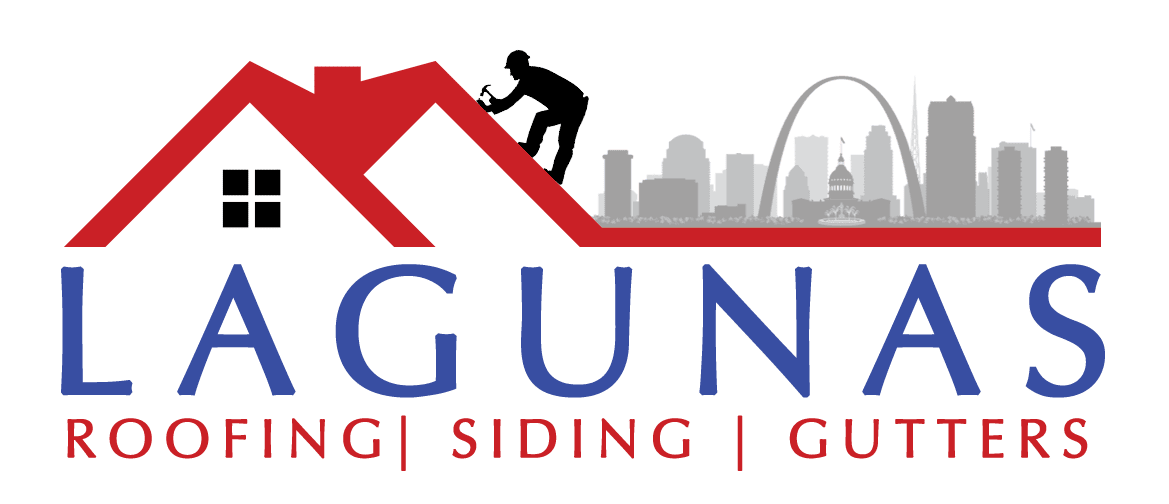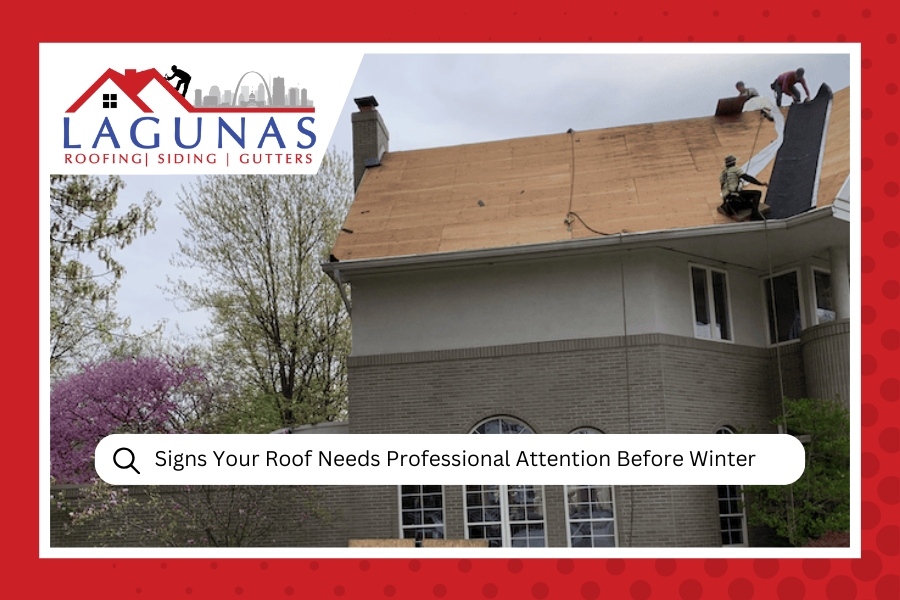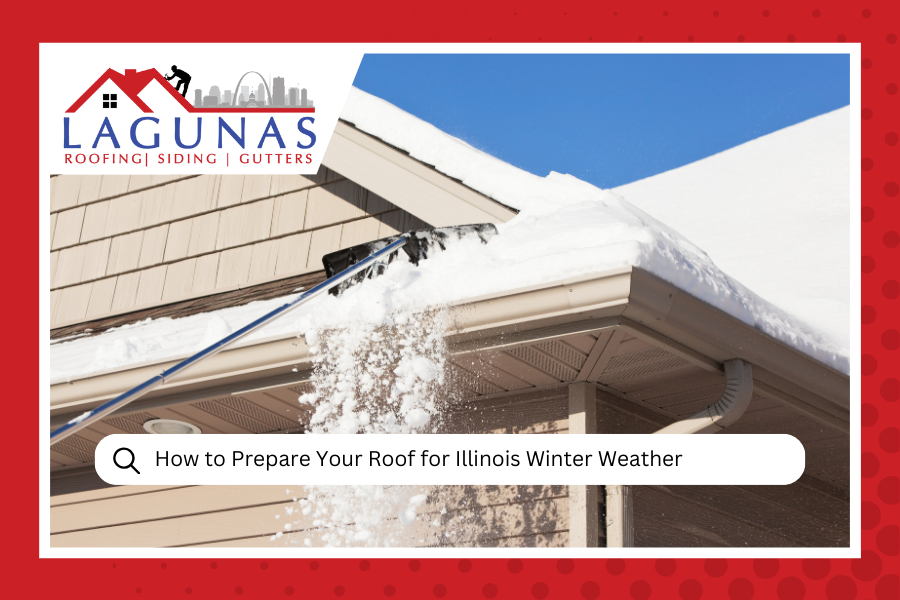
Why Ice Dams Form on Illinois Roofs and How to Prevent Them
Jump to Section:
Every winter, Illinois homeowners face the same frustrating problem: those thick ridges of ice that form along roof edges, looking innocent enough until water starts backing up and finding its way into your home. If you've ever dealt with mysterious ceiling stains or dripping water during a thaw, you've probably met your roof's ice dam up close and personal. The good news? Understanding why these frozen troublemakers form is the first step toward preventing them, and getting professional roof repair services can help tackle this exact issue before it becomes a major problem.
What Exactly Are Ice Dams?
Think of ice dams as nature's way of creating a really inconvenient dam on your roof. They form when snow melts on the warmer upper sections of your roof, flows down as water, then refreezes at the colder edges and gutters. This creates a barrier of ice that blocks proper drainage, forcing melting snow to back up under your shingles and potentially into your home.

Ice dams create thick barriers along roof edges that prevent proper water drainage during winter thaws.
It's basically your roof's version of a traffic jam, except instead of frustrated commuters, you've got frustrated water looking for anywhere to go, including places it definitely shouldn't.
Why Illinois Roofs Are Particularly Vulnerable
Our Illinois climate creates the perfect storm for ice dam formation. We get those classic Midwest temperature swings where it might be 35 degrees during the day but drop to 15 at night. Add in our typical snowfall patterns and varying roof temperatures, and you've got prime ice dam territory.
The combination of snow insulation on your roof, heat loss from your home, and our fluctuating temperatures creates what meteorologists call the "freeze-thaw cycle." According to the National Weather Service , these rapid temperature changes are particularly common in the Midwest and create ideal conditions for ice formation on roofs.
How Ice Dams Form: Step by Step
The Science Behind Ice Dam Formation
Here's what happens on your roof during a typical Illinois winter day:
Heat Loss Creates Temperature Zones
Your home naturally loses heat through the roof, warming the upper sections while the lower edges and gutters stay cold. This temperature difference is the key culprit in ice dam formation.
Snow Acts as Insulation
That blanket of snow on your roof actually insulates the upper areas, trapping heat and making the temperature difference even more pronounced.
The Melt and Freeze Cycle
During warmer parts of the day, snow melts on the heated upper roof areas. This water flows down to the cold edges where it refreezes, gradually building up that problematic ice barrier.
Need Professional Ice Dam Assessment?
Don't wait for water damage to discover ice dam problems. Our experienced team provides thorough roof inspections throughout the St. Louis metro area.
Schedule Inspection TodayCommon Signs You Have Ice Dams
Recognizing ice dam formation early can save you from significant water damage. Here are the telltale signs to watch for:
Visible Ice Formations
- Thick icicles hanging from gutters (though small icicles can be normal)
- Ice buildup along roof edges, especially near gutters
- Ridges of ice that seem to create a "dam" effect
Interior Warning Signs
- Water stains on ceilings or walls
- Peeling paint or wallpaper near the roofline
- Damp or wet insulation in the attic
- Ice or water in normally dry areas of your home
Exterior Red Flags
- Ice backing up under shingles
- Water overflow from gutters during thaws
- Visible sagging in gutters from ice weight
Don't ignore these signs. What starts as a minor ice buildup can quickly escalate into significant water damage that requires professional intervention. For more insights on recognizing roof problems early, check out our guide on common roofing issues homeowners face.
Prevention Strategies That Actually Work
The best approach to ice dams combines immediate winter tactics with longer-term home improvements. Here's what we recommend to homeowners in our service area:
| Prevention Method | When to Do It | Difficulty Level | Effectiveness |
|---|---|---|---|
| Clean Gutters | Before winter, monthly checks | Easy | High |
| Roof Raking | After heavy snowfall | Moderate | High |
| Attic Insulation | Fall preparation | Professional | Very High |
| Ventilation Upgrade | Any time | Professional | Very High |
| Heat Cables | Before winter | Professional | Moderate |
Immediate Winter Solutions
Keep Your Gutters Clear
Clean gutters allow water to flow freely instead of creating ice backups. Even in winter, remove any debris that might block drainage paths.
Use a Roof Rake Safely
Remove snow from the lower 3-4 feet of your roof edge using a roof rake with an extended handle. Stay on the ground and work carefully to avoid damaging shingles.
Maintain Consistent Indoor Temperatures
Avoid dramatic temperature changes in your home, especially in rooms directly below the roof. Consistent heating reduces the temperature differential that causes melting and refreezing.
Long-Term Prevention Methods
Improve Attic Insulation
Proper insulation keeps warm air from heating your roof surface. The goal is maintaining a consistent, cold roof temperature that prevents the melt-and-freeze cycle.
Enhance Attic Ventilation
Good ventilation allows cold air to circulate under your roof, keeping surface temperatures consistent. Ridge vents, soffit vents, and proper air circulation make a significant difference.
Consider Ice and Water Shield
This specialized underlayment provides an extra barrier against water infiltration, especially valuable along roof edges where ice dams typically form.
Professional Solutions for Stubborn Ice Dam Problems
Sometimes prevention isn't enough, especially if your home has structural issues that contribute to ice dam formation. That's where professional assessment becomes invaluable.

Professional roof inspections can identify ice dam vulnerabilities before they cause serious water damage.
When to Call in the Experts
If you're dealing with recurring ice dams year after year, it might be time for a professional evaluation. Issues like inadequate insulation, ventilation problems, or roofing system deficiencies require expert diagnosis and solutions.
Our team at Lagunas Roofing has extensive experience with ice dam prevention and roof replacement projects specifically designed to address these issues for Illinois homeowners. Learn more about when it's time to replace your roof to prevent recurring winter problems.
Professional Prevention Installations
Heat Cable Systems
Professionally installed heat cables can prevent ice formation in problem areas, though they should be part of a comprehensive solution rather than a standalone fix.
Ventilation Improvements
Adding ridge vents, soffit vents, or other ventilation components helps maintain consistent roof temperatures.
Insulation Upgrades
Professional insulation improvements address the root cause of many ice dam problems by preventing heat loss through your roof.
What NOT to Do with Ice Dams
We've seen homeowners try some pretty creative (and dangerous) approaches to ice dam removal. Here's what to avoid:
- Never use salt or chemicals- These can damage your roofing materials and aren't effective in cold temperatures
- Avoid chipping away ice- You'll likely damage shingles, gutters, or other roof components
- Don't use power tools- Hammers, chisels, or power equipment can cause serious roof damage
- Skip the DIY steam treatment- Without proper equipment and knowledge, you risk injury and roof damage
The Bottom Line on Ice Dam Prevention
Ice dams are preventable, but they require the right combination of immediate action and long-term planning. For homeowners in the Fairview Heights area and throughout the St. Louis metro region, understanding your specific roof's vulnerabilities is the first step toward effective prevention.
The key is addressing both the symptoms and the underlying causes. Quick fixes might help you through this winter, but lasting solutions require proper insulation, ventilation, and sometimes roofing system improvements.
Remember, every home is different, and what works for your neighbor might not be the best approach for your specific situation. When in doubt, consulting with experienced professionals can save you from costly water damage and give you peace of mind through even the harshest Illinois winters. For additional winter preparation tips, read our post on roofing tips for extreme weather conditions.
If you're dealing with ice dam problems or want to prevent them before next winter, don't hesitate to contact our team for a thorough assessment and customized prevention strategy.
Frequently Asked Questions
Does the thickness of snow on my roof affect ice dam formation in Illinois?
Absolutely! Thicker snow acts as better insulation, trapping more heat from your home and creating a stronger temperature differential between your upper roof and the cold edges. In Illinois, we typically see the worst ice dams after heavy snowfalls of 6 inches or more, especially when followed by temperature fluctuations.
Should I remove all icicles from my gutters to prevent ice dams?
Not necessarily. Small, thin icicles are often normal and harmless. However, if you see thick icicles accompanied by ice ridges extending back onto your roof surface, that's a sign of ice dam formation. Focus on the ice buildup on the roof itself rather than just the hanging icicles.
Can inadequate attic insulation in older Illinois homes make ice dams worse?
Yes, this is one of the most common causes we see in the St. Louis metro area. Many older homes lack proper insulation standards, allowing too much heat to escape through the roof. This creates the perfect conditions for the melt-and-freeze cycle that forms ice dams. Upgrading insulation often solves recurring ice dam problems.
How do I know if ice dam damage is affecting my home's interior before I see obvious water stains?
Check your attic during and after ice dam conditions for signs of moisture, ice formation on the underside of your roof, or wet insulation. You might also notice a musty smell, slight temperature changes in upper-level rooms, or minor paint bubbling before obvious water stains appear. Early detection can prevent major damage.



